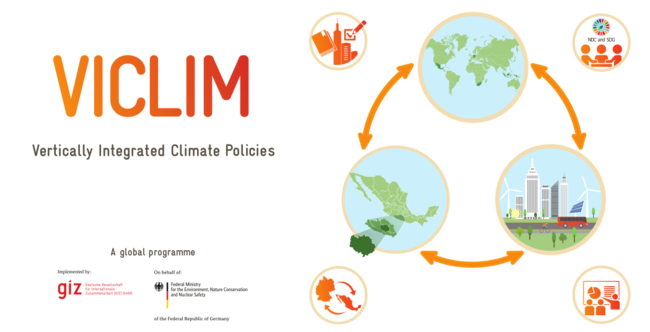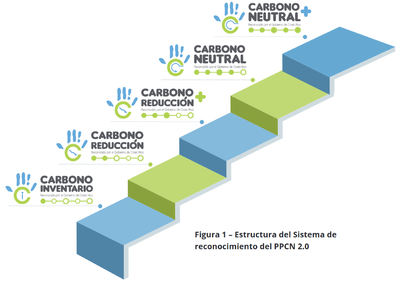Costa Rica’s Country Program On Carbon Neutrality 2.0: Category Municipalities
In brief
Overview
Costa Rica’s Country Program on Carbon Neutrality 2.0 (Programa País de Carbono Neutralidad 2.0; PPCN 2.0) is a national climate policy instrument that encourages organisations (private and public), businesses and companies as well as local governments to measure, reduce and compensate for their greenhouse gas (GHG) emissions. It uses a ‘system of recognition’ (‘sistema de reconocimiento’) of mitigation efforts by the participants.
The program’s ‘local government category’ targets specifically Costa Rica’s 82 municipalities (‘cantones’) and their districts and communities: Programa País de Carbono Neutralidad: Categoría cantonal (PPCNC) it is called. The PPCNC grants official government symbols (‘símbolos’), i.e. certificates, endorsed by the Costa Rican Ministry of Environment and Energy (Ministerio de Ambiente y Energía, MINAE), to participating municipalities and districts for their endeavours in climate change mitigation.
There are five levels of recognitions with the respective symbol to obtain:
- recognition for elaborating a GHG inventory[1];
- recognition for managing mitigation actions and quantifying GHG emissions reductions;
- recognition for taking additional reduction actions defined by the programme;
- recognition for compensating for emissions that have not been reduced by the actions taken (possible mechanisms of compensation are set in the program); and
- recognition for taking additional compensation actions.
Besides the overall objective of a reduction of GHG emissions, the programme pursues following additional benefits:
- to raise awareness among municipalities and their citizens about climate change and the challenges involved in the process of decarbonising the country's economy;
- to strengthen inter-cantonal and inter-sectoral strategies for climate action;
- to produce primary information on GHG emissions inventories in cantons and districts.
The programme was designed by the Direction of Climate Change (Dirección de Cambio Climático, DCC) of the Ministry of Environment and Energy (Ministerio de Ambiente y Energía, MINAE) and made official by Executive Decree No. 41122.
The main process steps
The first step within the process is to have the municipality’s or district’s commitment through an official agreement by the Municipal or District Council and a statement by the Mayor. The second step is the establishment of an inter-sectoral commission within the municipality that executes and monitors all actions around the programme and the mitigation efforts. After that, the foundations for the inventories have to be laid: definition of the geographical boundaries, of sectors, sources and scopes of GHGs, of baseline and report years, and definition of the methodologies used. Costa Rica actually established a unique report that includes all five sectors (energy, transport, waste, industry and agriculture) and different sources of emissions by sector. It reverts to the Global Protocol for Community-Scale Greenhouse Gas Emission Inventories (GPC). The (inventory) report period is 3 years given the complexity to collect all the information and dealing with municipal proceedings.
In order to receive the first ‘Carbon Inventory’ symbol / certificate, the municipality or district now has to collect the information, calculate the emissions and have the quality of the data evaluated (refer to steps # 8 to 10). For the subsequent certificates, municipalities can apply after having implemented measures and additional measures respectively and after having made compensations.
* after step 10, 12, 13, 14 and 15 respectively:
Implementation
In 2017, MINAE kicked off the implementation of the PPCNC. The GIZ supported projects VICLIM, Acción Clima II and MiTransporte[2] joined and worked for the following years with MINAE (1) to organise a piloting in six municipalities (Belén, Desamparados, Golfito, La Unión, San José and District of Monteverde); (2) to use lessons-learnt from the pilots for improvements in the programme and a better systematisation of the processes; and eventually (3) to roll-out the programme.
The pilots
The six pilot municipalities compiled their GHG emission inventories, determined reduction potentials in the sectors of transport, energy consumption, agriculture and solid waste, identified priority areas for interventions and compiled action plans. They were continuously accompanied in the activities. A capacity development process started in December 2017 and continued until July 2018 with training courses, a series of workshops and events for knowledge sharing and peer-to-peer learning among the municipalities. Environment consultancy companies were involved that supported the municipalities in their various tasks. In December 2018, once the inventories were completed and action plans elaborated, all six municipalities were officially certified in the first ‘Category of inventory’.
After having compiled their inventories and had prioritised actions, they set to work on elaborating ‘project profiles’ for selected measures:
- sustainable mobility and public transportation,
- treatment of organic waste from farmers market and from households,
- waste transference centres and waste management in general.
By the end of 2019, all six municipalities had project profiles organizing key information on costs, investment needs and estimation of social and environmental benefits. At least four of them organised to present their project ideas in the course of a competition organized by the foundation CRUSA (Costa Rican USA Foundation for Cooperation) and the IKI project Acción Clima II for funding support in the waste sector. By May 2020, two of them (Desamparados and La Unión) have been selected to receive a financial grant to implement parts of their project.
Roll-out
At the same time, thanks to the big success of the pilot process, CRUSA provided additional funding to the IKI project Acción Clima II. In June 2019, VICLIM co-organised with Acción Clima II a competition among the Costa Rican municipalities for support in participating in the PPCNC. 50 out of 82 municipalities took part in the competition. 14 were selected and started the processes.
References
- ↑ The specifications set in the program are based on the Global Protocol for Community-Scale Greenhouse Gas Emission Inventories (GPC) adapted to the Costa Rican context.
- ↑ All three projects are part of the International Climate Initiative (IKI) by the Federal Ministry for the Environment, Nature Conservation and Nuclear Safety (BMU).























